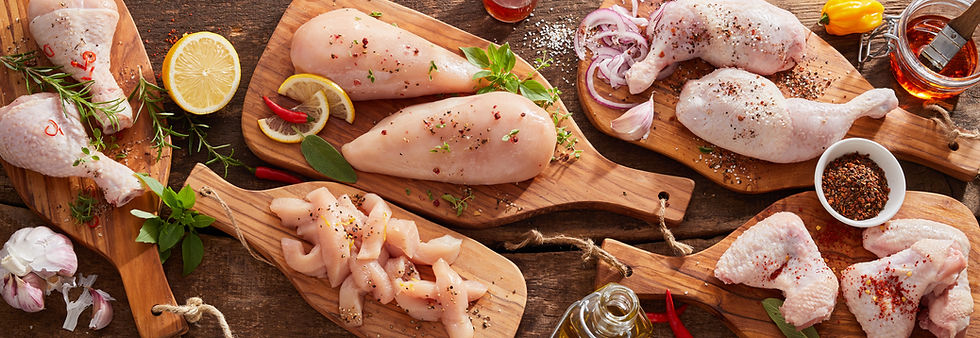
Top 10 Protein Sources for Muscle Building
When it comes to building muscle, consuming adequate protein is paramount. Not all protein sources are created equal, however. To maximize muscle growth, it's crucial to choose high-quality protein sources that provide a rich array of essential amino acids. In this blog post, we’ll explore the top 10 protein sources that can help you achieve your muscle-building goals.
1. Chicken Breast
Why it’s great:
Chicken breast is a staple in many muscle-building diets due to its high protein content and low fat. It’s versatile, easy to cook, and can be used in a variety of dishes.
Nutritional Value (per 100g):
Protein: 31g
Calories: 165
Fat: 3.6g
How to use it:
Grill, bake, or sauté chicken breast and pair it with vegetables, quinoa, or brown rice for a balanced meal.
2. Eggs
Why it’s great:
Eggs are a complete protein source, meaning they contain all nine essential amino acids. They are also rich in vitamins and minerals, including B vitamins which are important for energy production.
Nutritional Value (per large egg):
Protein: 6g
Calories: 72
Fat: 5g
How to use it:
Enjoy eggs scrambled, boiled, or in an omelet with vegetables. Eggs can also be added to salads and sandwiches.
3. Greek Yogurt
Why it’s great:
Greek yogurt is thicker and creamier than regular yogurt and contains almost double the protein. It’s also a good source of probiotics, which can aid digestion.
Nutritional Value (per 100g):
Protein: 10g
Calories: 59
Fat: 0.4g (non-fat variety)
How to use it:
Eat Greek yogurt as a snack, with fruit and honey, or add it to smoothies for a protein boost.
4. Lean Beef
Why it’s great:
Lean beef provides high-quality protein along with essential nutrients like iron, zinc, and vitamin B12, which are vital for muscle growth and recovery.
Nutritional Value (per 100g):
Protein: 26g
Calories: 250
Fat: 15g
How to use it:
Opt for cuts like sirloin, tenderloin, or lean ground beef. Grill, stir-fry, or roast beef and pair it with vegetables and whole grains.
5. Salmon
Why it’s great:
Salmon is not only a great source of protein but also rich in omega-3 fatty acids, which have anti-inflammatory properties and can aid in muscle recovery.
Nutritional Value (per 100g):
Protein: 20g
Calories: 208
Fat: 13g
How to use it:
Bake, grill, or pan-sear salmon and serve with a side of veggies and a whole grain like quinoa or brown rice.
6. Tofu
Why it’s great:
Tofu is an excellent plant-based protein source, making it perfect for vegetarians and vegans. It’s also rich in calcium and iron.
Nutritional Value (per 100g):
Protein: 8g
Calories: 76
Fat: 4.8g
How to use it:
Use tofu in stir-fries, salads, or as a meat substitute in various dishes. It can be baked, grilled, or scrambled.
7. Cottage Cheese
Why it’s great:
Cottage cheese is packed with casein protein, which is slow-digesting and can help prevent muscle breakdown over long periods, such as overnight.
Nutritional Value (per 100g):
Protein: 11g
Calories: 98
Fat: 4.3g
How to use it:
Eat cottage cheese on its own, with fruit, or use it in recipes like protein pancakes or dips.
8. Quinoa
Why it’s great:
Quinoa is a complete protein source and also provides carbohydrates, fiber, and various vitamins and minerals, making it a well-rounded addition to your diet.
Nutritional Value (per 100g cooked):
Protein: 4.1g
Calories: 120
Fat: 1.9g
How to use it:
Use quinoa as a base for salads, as a side dish, or in place of rice in various recipes.
9. Lentils
Why it’s great:
Lentils are a fantastic plant-based protein source and also high in fiber, iron, and folate. They’re budget-friendly and versatile.
Nutritional Value (per 100g cooked):
Protein: 9g
Calories: 116
Fat: 0.4g
How to use it:
Add lentils to soups, stews, salads, or use them to make veggie burgers or meatless meatloaf.
10. Whey Protein
Why it’s great:
Whey protein is a convenient and fast-absorbing protein source, perfect for post-workout recovery. It contains all essential amino acids and is easy to incorporate into your diet.
Nutritional Value (per scoop, approx. 30g):
Protein: 24g
Calories: 120
Fat: 1g
How to use it:
Mix whey protein with water or milk for a quick shake, or add it to smoothies, oatmeal, or protein pancakes.
Conclusion
Incorporating a variety of high-quality protein sources into your diet is key to supporting muscle growth and overall health. Whether you prefer animal-based or plant-based proteins, there are plenty of delicious and nutritious options to choose from. Experiment with different recipes and meal combinations to keep your diet exciting and effective.
Remember, consistency is crucial—aim to include a source of protein in each meal and snack to ensure you’re meeting your daily protein needs and supporting your muscle-building goals.
Comments